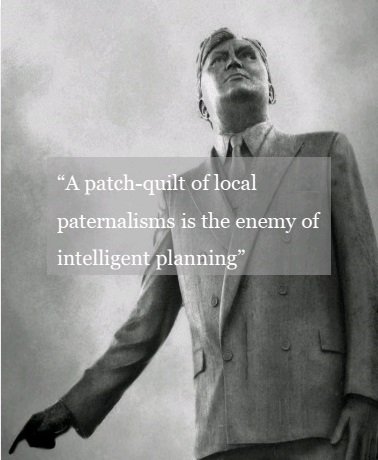From the beginning of the 17th century, when the Tudor government somewhat reluctantly introduced Poor Law legislation, the question of whether responsibility for meeting the welfare needs of citizens should lie with the state or with private philanthropy has been at the heart of political debate for hundreds of years.
Over time, the nature and scale of social problems changed as the UK became industrialised and urbanised, and it became apparent that the State had to step into many areas. But as David Owen, one of the most prominent historians of English philanthropy, notes: The welfare role of government remained “largely supplementary, to fill such urgent gaps as might be left by the network of private agencies and to carry out its traditional obligation of relieving the genuinely destitute.”

However, from the late 19th century into the first half of the 20th century a growing body of thought emerged which saw the State as having a far more central role in providing welfare. This was realised in 1948 with the creation of the National Health Service and the wider welfare state.

Philanthropy and charities had played a key role in this story, as almost every element of the welfare state as we know it reflected a need that was first identified and met through philanthropic means, but it was unclear at first what the ongoing role (if any) of philanthropy was to be. As Maria Brenton notes “a common expectation in those years at the end of the war was that the voluntary sector would just wither away.”

Some rejoiced at this idea. Labour Health Minister Aneurin Bevan, for instance, derided philanthropy as “a patch-quilt of local paternalisms” and thought that the move towards centralised state control of healthcare represented clear progress.
Others had different views: William Beveridge, one of the key intellectual architects of the welfare state, thought that there would always be a role for philanthropy because: “Voluntary Action is needed to do things which the State should not do… It is needed to do things which the State is most unlikely to do. It is needed to pioneer ahead of the State and make experiments. It is needed to get services rendered which cannot be got by paying for them.”
 The dire predictions of those who thought philanthropy’s end had come turned out to be incorrect, but the creation of the welfare state did lead to a period of soul-searching in which charities and their supporters were forced to rethink what their role might be.
The dire predictions of those who thought philanthropy’s end had come turned out to be incorrect, but the creation of the welfare state did lead to a period of soul-searching in which charities and their supporters were forced to rethink what their role might be.
For some organisations this meant repositioning themselves to fill in gaps in state provision. For others it meant challenging the failings of state welfare directly through advocacy and campaigning. As it became clear throughout the 1960s and 70s that universal welfare was not the panacea some had thought, organisations like Shelter and the Child Poverty Action Group emerged to bring new issues of homelessness and poverty to public attention.
The present-day relationship between philanthropy and the welfare state in the UK is complex: in addition to charities filling in gaps in state welfare, or working alongside public sector bodies to enhance state services (as many charities do within the NHS), there are also many charities that deliver services on behalf of the state through grant-funding or contractual arrangements. Perhaps as a result, the desirable balance between state-funded and philanthropic welfare provision continues to be a point of fierce debate in political discourse.

